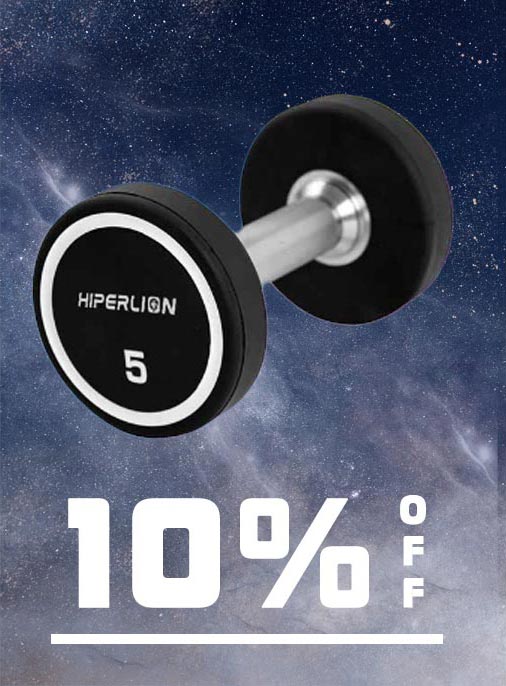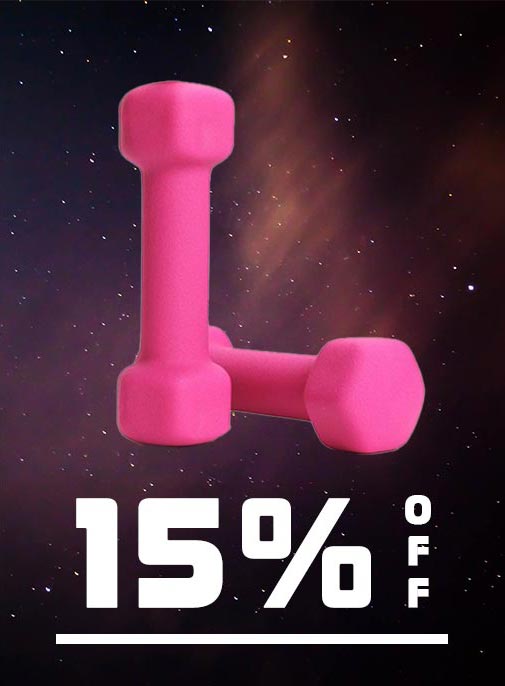Dumbbell play a significant role when we exercise. They are probably the most common form of fitness equipment. Whether it’s an upper body, lower body, or full-body workout, dumbbells play a big role in our fitness routines.
The good thing about dumbbells is that they are easy to use. Unlike some other pieces of gym equipment, there is no need to navigate moving parts or get into awkward positions. You may perform a variety of workouts and build strength throughout your body by holding a set of dumbbells.
But there are some mistakes that you may make. Your activities will be less effective as a result of some common mistakes, and you may even run the danger of getting hurt. You might not even be conscious of performing them.
Here are some common dumbbell mistakes to watch out for in order to keep your fitness progress on track.
Your wrists are bent.
Almost every lift you do with dumbbells requires straight wrists. Your hands, wrists, and forearms should form a straight line placed on top of one another.
Bent wrists can cause tremendous stress in places they shouldn’t be bent, making you a live target for injury. Remind yourself to keep your wrists straight whether you are pressing your chest, pressing your shoulders, or simply holding them at your side.
You’re lifting too heavy.
A sure sign that a dumbbell is too heavy is when you have to employ power to complete a movement rather than the muscle you are trying to exercise.
Take bicep curls, for example. Swinging the weight and using the momentum and effort of the rest of your body is not an effective way to build arm strength. The biceps aren’t getting as much training, and the muscle isn’t being isolated either. Instead, switch your dumbbells to lighter ones and try to accomplish this by contracting the target muscles.
Another sign of lifting too much weight is that your form is starting to falter. Arching or pain in the lower back are important warning signs. If you can’t complete the exercise in question with perfect form, then it’s best to start lighter and work your way up.
You’re not Considering about where You Hold Them
There’s no right or wrong way to hold dumbbells for lower body exercises, it does depend on your goals.
When you squat, holding the dumbbells on your sides will give your legs and glutes a workout. Your core will become more actively involved after you place them on your chest. Your upper body will begin to exert some effort if you life them over your shoulders or perhaps your head. This also applies to many other movements, such as long distance running.
These are all great options. However, it’s recommended to return to the suitcase squat if you want to strengthen your legs in particular and notice that your back or stomach begin to pain as soon as you move the weights higher.
The higher you hold the dumbbell, the more difficult it becomes. If you want to target your lower body more and lift heavier weights, start by placing the dumbbells on your sides.
You’re not lifting them correctly
The first rule of using dumbbells comes into play before you even start exercising. When picking up a pair of dumbbells from the floor, be sure to lift them up.
This means bending your knees and sitting your hips back to reach them. The back should never be bent or bent forward. The simplest and most frequent method to get hurt when lifting dumbbells is to bent.
You’re using the same dumbbell set for all exercises
If you only have one pair of dumbbells, that’s not going to help. But in an ideal world, you would use different weights for different movements.
Often, the lower body is much stronger than the upper body, which means that to challenge it, you need heavier dumbbells than your arms. You won’t notice significant growth in any area of your body if you consistently use the same set of light dumbbells.
You must raise the weight if your goal is to increase your strength. not just perform more motions.
You’re rushing your reps
A typical weightlifting movement pattern includes a slow period followed by an explosive period. Both have equal value.
Consider the shoulder press exercise as an illustration. The muscles are contracting as you raise a dumbbell above, and you want this period to be more explosive. On the other hand, you want to slow down and keep control as you descend.
While maintaining perfect form, this exercise is excellent for developing strength and muscle.
Your grip gets tired quickly
If you perform back-to-back exercises while maintaining the same grip on the dumbbells, you can notice that your hands and forearms become sore and tired before the rest of your body.
As a result, you will soon lose the ability to perform additional workouts without really wearing out the muscles you are trying to work.
To solve this issue, you have two options. In the long term, consider strengthening your grip. In the short term, mix up the way you grip your dumbbells.
When planning your workout, consider whether you want to hold a set of dumbbells too long. Schedule some body weight exercises or exercises that use a different grip, such as the goblet squat. By doing so, you may focus on your muscles rather than wearing out your hands.





